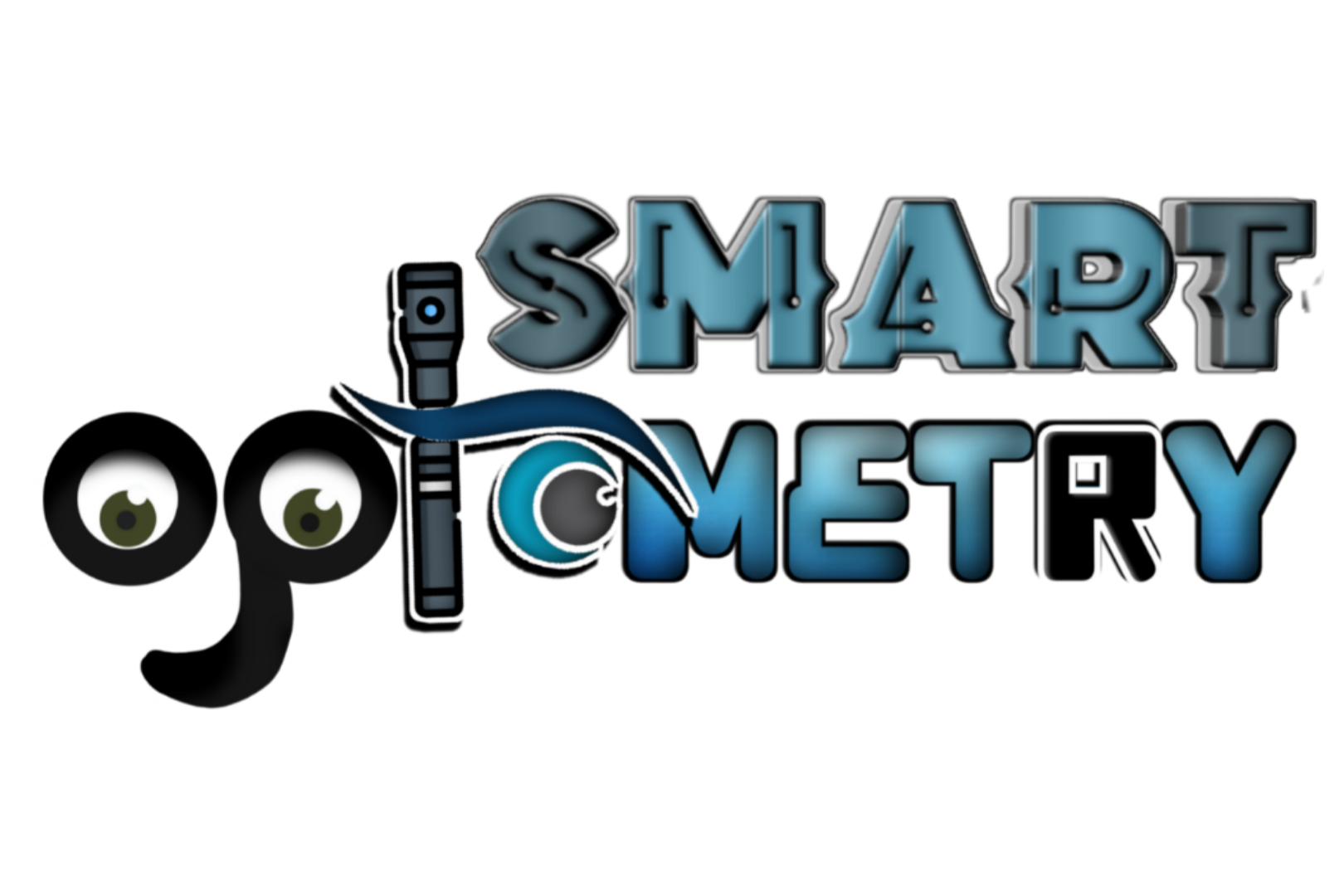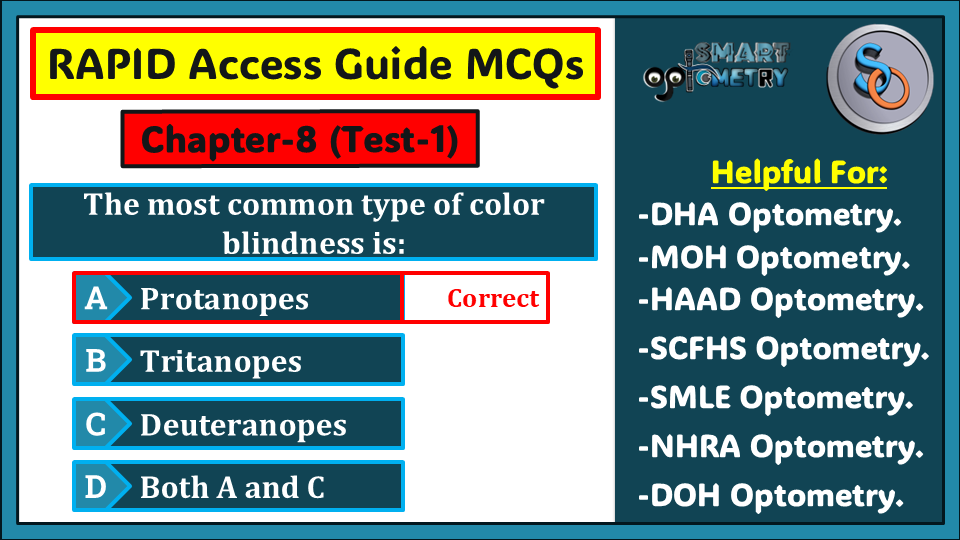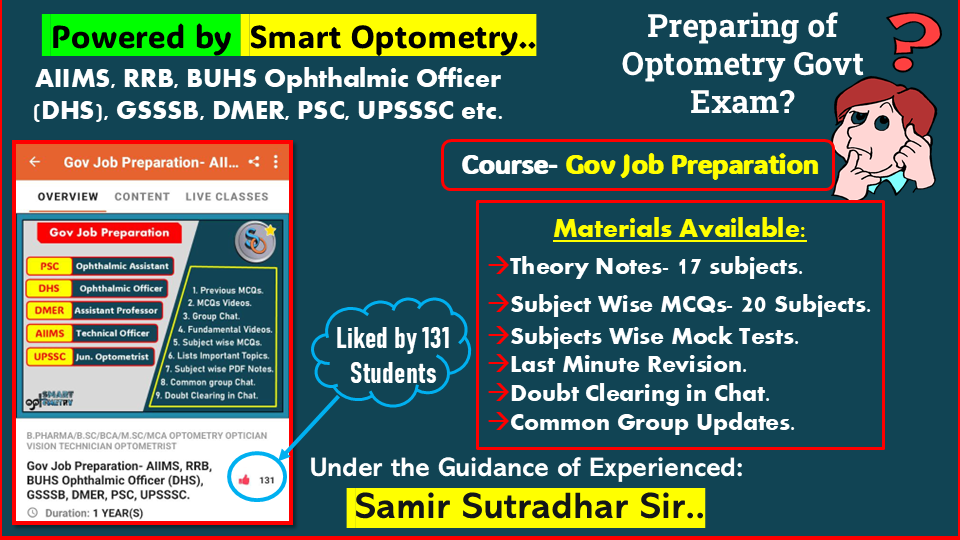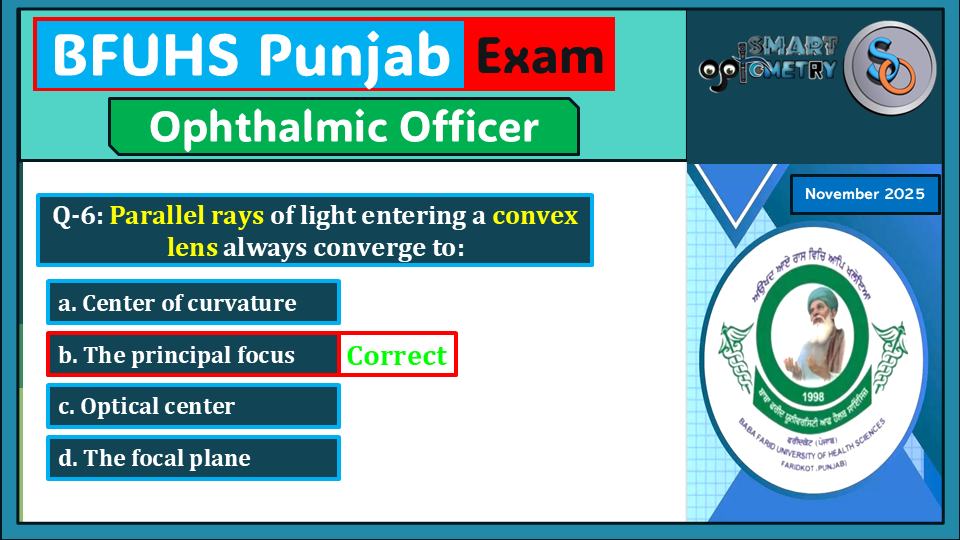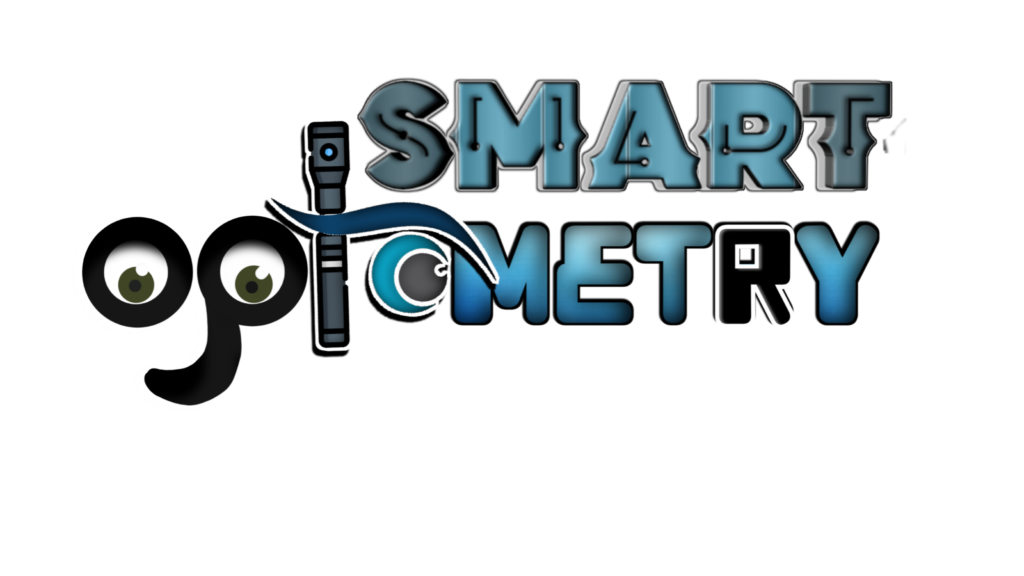1) The primary function of fixational microsaccades is:
- A. To induce small positional errors
- B. To correct small positional errors
- C. To correct small fixation disparity errors
- D. To correct small VOR errors
.
.
2) Aqueous as compared to plasma has all more, except:
- A. Higher glutathione
- B. Higher pH
- C. None
- D. All of the above
Click “Show more” to see the answer and explanation.
Correct Answer: B.
Explanation:
Aqueous humor has a lower pH compared to plasma, despite having higher levels of some components like glutathione.
Note: Prepare for Optometry License Exam (DHA, MOH, HAAD, QCHP, OMSB, SMLE, SCFHS, DHCC, NHRA) with our course “MCQs in Optometry”. This course provides: Basic Notes, Fundamental Videos, Subjectwise MCQs, PDF MCQs, Previous Years MCQs, RAPID Access Guide for Optometrists PDF Book, Group Chat, Live Support.
.
.
3) Panophthalmitis occurs following:
- A. Perforated corneal ulcer
- B. Blunt injury
- C. Orbital cellulitis
- D. Cavernous sinus thrombosis
.
.
4) Cilio-retinal artery is a branch of:
- A. Peripheral retinal artery
- B. Posterior ciliary artery
- C. Anterior ciliary artery
- D. Central retinal artery
.
.
5) The most common type of color blindness is:
- A. Protanopes
- B. Tritanopes
- C. Deuteranopes
- D. Both A and C
Click “Show more” to see the answer and explanation.
Correct Answer: A.
Explanation:
Protanopia and deuteranopia are common forms of red-green color blindness, but protanopia is more prevalent.
Note: Prepare for your Optometry Licence/Academic Exam under experience Samir Sutradhar sir. Enroll in our Course “MCQs in Optometry” that will give you: Basic Notes, Fundamental Videos, Subjectwise MCQs, PDF MCQs, Previous Years MCQs, RAPID Access Guide for Optometrists PDF Book, Group Chat, Live Support.
.
.
6) The dividing line between the superior and posterior mediastinum is:
- A. A plane extending from the sixth to seventh intervertebral space forward to the body of the sternum
- B. The coronary sulcus of the heart
- C. A plane extending from the fourth to fifth intervertebral space to the manubriosternal junction
- D. A plane between the apex of the heart and the xiphoid process of the sternum
.
.
7) Which of the following is not a feature of vernal conjunctivitis?
- A. Maxwell Lyon sign
- B. Tranta’s spots
- C. Follicles
- D. Perilimbal papillary hypertrophy
.
.
8) All are characteristics of the 3rd nerve except:
- A. Carries parasympathetic fibers
- B. Supplies inferior oblique
- C. Enters orbit through the inferior orbital fissure
- D. Causes miosis
Click “Show more” to see the answer and explanation.
Correct Answer: C.
Explanation:
The 3rd nerve enters the orbit through the superior orbital fissure, not the inferior.
Note: Our Course “MCQs in Optometry” with 95% success rate will help to prepare for Optometry License Exam like DHA, MOH, HAAD, QCHP, OMSB, SMLE, SCFHS, DHCC, NHRA.
.
.
9) The common intermediate to which protein, fat, and carbohydrate can all be degraded is:
- A. Glucose
- B. Acetyl CoA
- C. Leptin
- D. Citrate
.
.
10) Ophthalmic change initially seen in diabetes mellitus (DM):
- A. Microaneurysm
- B. Hard exudates
- C. Cotton wool spots
- D. Neovascularization
.
.
11) During increased accommodation, the:
- A. Lens front radius of curvature increases
- B. Lens thickness decreases
- C. Zonular tension increases
- D. Lens back radius of curvature changes relatively little
Click “Show more” to see the answer and explanation.
Correct Answer: D.
Explanation:
The back curvature of the lens does not change significantly during accommodation, though the front curvature does.
Note: Enroll in our Course “MCQs in Optometry” to prepare for Optometry License Exam under Experienced Samir Sutradhar sir. This course will give you: Basic Notes, Fundamental Videos, Subjectwise MCQs, PDF MCQs, Previous Years MCQs, RAPID Access Guide for Optometrists PDF Book, Group Chat, Live Support.
.
.
12) The following stages are involved in leukocyte movement into a site of inflammation except:
- A. Division
- B. Adhesion
- C. Phagocytosis
- D. Rolling
.
.
13) All of the following changes are caused by benign hypertension except:
- A. Narrowing of arterioles
- B. Exudates
- C. Cotton wool spots
- D. Retinal hemorrhage
.
.
14) Sauce and cheese retinopathy is seen in:
- A. CMV
- B. Rubella
- C. Toxoplasmosis
- D. Congenital syphilis
Click “Show more” to see the answer and explanation.
Correct Answer: A.
Explanation:
This fundoscopic appearance is characteristic of cytomegalovirus (CMV) retinitis.
Note: Prepare for Optometry License Exam (DHA, MOH, HAAD, QCHP, OMSB, SMLE, SCFHS, DHCC, NHRA) with our course “MCQs in Optometry”. This course provides: Basic Notes, Fundamental Videos, Subjectwise MCQs, PDF MCQs, Previous Years MCQs, RAPID Access Guide for Optometrists PDF Book, Group Chat, Live Support.
.
.
15) Herpetic corneal ulcer is diagnosed by:
- A. Giemsa stain
- B. ELISA
- C. Cell culture/PCR
- D. Rose Bengal stain
.
.
16) A 40-year-old lady presents with bilateral papilloedema. CT scan shows normal ventricles. The diagnosis is:
- A. Benign intracranial hypertension
- B. Malignant hypertension
- C. Papillitis
- D. Raised intraocular pressure
.
.
17) Parenteral steroids cause:
- A. Papilloedema
- B. Glaucoma
- C. Cataract
- D. Corneal opacity
Click “Show more” to see the answer and explanation.
Correct Answer: C.
Explanation:
Long-term steroid use can lead to the development of posterior subcapsular cataracts.
Note: Prepare for your Optometry Licence/Academic Exam under experience Samir Sutradhar sir. Enroll in our Course “MCQs in Optometry” that will give you: Basic Notes, Fundamental Videos, Subjectwise MCQs, PDF MCQs, Previous Years MCQs, RAPID Access Guide for Optometrists PDF Book, Group Chat, Live Support.
.
.
18) Individuals working with VDUs (visual display units) have a higher demand for:
- A. Central vision, up
- B. Central vision, peripheral
- C. Peripheral vision, central
- D. Central vision, left down field
.
.
19) An observer continually varies the intensity of one light up and down until its brightness matches that of a second light. This is an example of the utilization of the psychophysical method of:
- A. Limits
- B. Constant stimuli
- C. Adjustment
- D. Staircase
.
.
20) Schwalbe line is located at the:
- A. Transition of the Bowman layer
- B. Scleral spur
- C. Base of the trabecular meshwork
- D. Termination of the Descemet membrane
Click “Show more” to see the answer and explanation.
Correct Answer: D.
Explanation:
The Schwalbe line is the anatomical termination of the Descemet membrane at the corneal limbus.
Note: Our Course “MCQs in Optometry” with 95% success rate will help to prepare for Optometry License Exam like DHA, MOH, HAAD, QCHP, OMSB, SMLE, SCFHS, DHCC, NHRA.
.
.
Conclusion:
Overview of “Rapid Access Guide for Optometrists“
The “Rapid Access Guide for Optometrists” is an essential resource designed for optometry students and professionals preparing for various optometry license exams, including DHA, MOH, HAAD, QCHP, OMSB, SMLE, SCFHS, DHCC, and NHRA. This comprehensive book provides a streamlined approach to mastering the content required for these certifications, offering practice materials, mock tests, and review questions tailored to the specific needs of optometrists.
Packed with Prometric Optometric Questions, this guide serves as a Prometric Exam Optometry Practice Question Bank, offering targeted preparation for DHA Optometrist Exam Questions, MOH Optometry Questions, and other Gulf-region exams. With resources like Optometry MCQ Book PDF Download, Optometry Rapid Review Guide, and Optometrist Exam Preparation Guide, this book ensures a complete learning experience for those aiming to excel in Free Optometry MCQs and Optometry License Exam MCQs.
The book also includes specialized tools such as HAAD Optometrist Questions Bank, NHRA Optometry License Questions, SCFHS Optometrist Study Material, and SMLE Optometry Questions Bank, ensuring relevance across a broad spectrum of regulatory bodies. For those seeking a DHA Mock Test for Optometrist or QCHP Optometrist Exam Guide PDF, this guide is your go-to preparation tool.
Key highlights include:
- Comprehensive Optometry MCQ Book with easy-to-understand explanations.
- Practice materials like MOH Optometry Exam Practice PDF and Gulf Countries Optometry License Prep Guide to simulate real exam scenarios.
- Resources for quick learning, including Rapid Review for Optometry Professionals and Optometry Quick Reference Book PDF.
- Tailored preparation tools like Prometric Optometrist Study Guide PDF and SCFHS Optometry Exam Prep Questions PDF.
- Access to free resources like DHA Optometry Exam Book Free PDF Download and Free Optometrist Exam Questions for additional practice.
Whether you are an optometry student or a seasoned professional, the “Rapid Access Guide for Optometrists” is a vital companion in achieving success in Gulf-region optometry licensing exams, ensuring you are fully equipped for your career journey.
- Check Our Courses: Ophthalmic Instrumentation, Clinical Refraction, Contact Lens, Binocular Vision, Dispensing Optics, MCQs in Optometry
- Download our App “Optometry Notes & MCQs” from Google Play Store.
